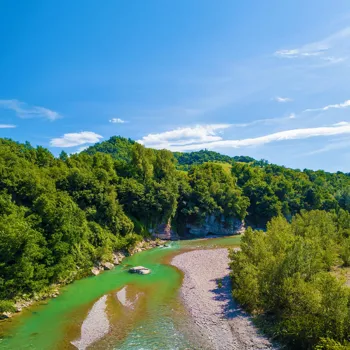Discover how the Clean Ganga Project impacts your health and community. Dive into 5 key insights for a healthier you!
Namaste folks! Ganga maa, our holy river, is not just a symbol of faith, but also intrinsically
linked to the health and well-being of millions of Indians.

The Namami Gange Programme, our ambitious project to clean and rejuvenate the Ganga, has a surprisingly direct impact on you, your family, and your community. Let's dive into five key insights that show how a cleaner Ganga translates to a healthier you!
Insight 1
Reduced Waterborne Diseases: Think about it – a polluted Ganga means contaminated drinking water for many. This leads to a higher risk of waterborne diseases like typhoid, cholera, and dysentery, especially for those living along the riverbanks. Children and the elderly are particularly vulnerable.

By cleaning the river, the Namami Gange project aims to reduce the levels of harmful bacteria and pathogens, making the water safer for bathing, agriculture, and ultimately, consumption (after proper treatment, of course!).
Less pollution means fewer sick days, fewer trips to the doctor, and a healthier, more productive population. Imagine the savings on healthcare costs alone! This is a win-win situation for everyone concerned about public health and a better quality of life.
Clean water is a basic human right, and a clean Ganga plays a crucial role in ensuring that right for millions.
Insight 2
Improved Agricultural Practices: The Ganga basin is an agricultural heartland. A polluted river contaminates the irrigation water, affecting crop yields and the quality of the produce.
The Namami Gange project focuses on promoting organic farming practices and reducing the use of harmful chemical fertilizers and pesticides that often find their way into the river.
By promoting sustainable agriculture, the project contributes to healthier crops, which in turn, means better nutrition for you and your family. Less chemical runoff also means a cleaner river, creating a virtuous cycle of environmental and health benefits.
Consider the long-term impact on food security and public health! Farmers benefit from increased yields and reduced costs, while consumers enjoy healthier, safer food. This is a crucial step towards a more sustainable and healthy future for all.
Insight 3
Enhanced Sanitation and Hygiene: Open defecation along the riverbanks is a major source of pollution. The Namami Gange project includes the construction of toilets and improved sanitation facilities in villages and towns along the Ganga.
This not only reduces the amount of human waste entering the river, but also promotes better hygiene practices in communities. Improved sanitation translates to a reduced risk of infections and diseases, particularly among children.
Imagine the impact on school attendance and overall child development! By addressing the issue of open defecation, the project is contributing to a cleaner, healthier, and more dignified life for millions of people.
This is a crucial step towards achieving the Sustainable Development Goals related to sanitation and hygiene.
Insight 4
Cleaner Air Quality: Believe it or not, a cleaner Ganga can also improve air quality! The project involves the development of green cover along the riverbanks, which helps to absorb pollutants from the air.

Reduced pollution in the river also means less evaporation of harmful chemicals and contaminants, leading to cleaner air in the surrounding areas.
Better air quality reduces the risk of respiratory problems like asthma and bronchitis, particularly for those living in densely populated areas along the river. Consider the benefits for children and the elderly, who are most vulnerable to air pollution.
A cleaner Ganga contributes to a healthier environment overall, improving the air we breathe and the water we drink. This is a crucial step towards creating a more livable and sustainable environment for future generations.
Insight 5
Boost to Eco-Tourism and Mental Well-being: A clean and healthy Ganga can boost eco-tourism opportunities, creating jobs and economic benefits for local communities. Imagine serene boat rides, bird watching, and other nature-based activities along the riverbanks.

A cleaner environment also has a positive impact on mental well-being. Studies have shown that spending time in nature can reduce stress, improve mood, and boost overall mental health.
The Namami Gange project aims to restore the natural beauty of the Ganga, creating a more peaceful and rejuvenating environment for all.
This is a crucial step towards promoting a holistic approach to health and well-being, recognizing the interconnectedness of physical, mental, and environmental health. A healthy Ganga is a source of joy, inspiration, and well-being for all.
Support the Clean Ganga Project for a healthier future
These five insights highlight the surprising connection between the Clean Ganga Project and your health. By cleaning the river, we are not just restoring a sacred symbol, but also investing in a healthier and more sustainable future for ourselves and our children.

Let us all support the Namami Gange project and contribute to making the Ganga cleaner and healthier for generations to come! Jai Hind!












